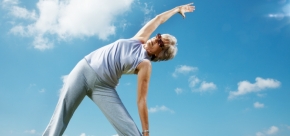Physiotherapist Jason Lee helps his clients with many different everyday ailments. He explains why we get cramps and how to manage them.
A muscle cramp involves an involuntary and uncontrollable spasm of a muscle. The calf and foot are common areas to experience musculoskeletal cramping, where muscle cramping causes the muscle to tighten and shorten. Cramps are usually harmless, but regular cramping or severe cramping that lasts longer than a few minutes should be mentioned to your doctor or physiotherapist.
However, there can be many causes of cramp and risk factors can include poor physical condition, dehydration, muscle fatigue and high levels of alcohol or caffeine.
Muscle cramps usually resolve after a few seconds or minutes. Simple strategies to resolve cramping you can consider include:
-
- Gently move the affected limb for a few seconds – for calf cramping try gently pointing your foot up and down.
-
- Gently self-massage the affected area.
-
- Icepacks – applying an icepack for a few minutes can relax the muscle.
In order to reduce the likelihood of musculoskeletal cramping consider:
-
- Improving your overall cardiovascular fitness with a regular exercise program.
-
- Monitoring your electrolyte (potassium/sodium) or sugar levels. Diuretics such as caffeine and alcohol can deplete your electrolyte levels. Foods such as bananas, orange juice or tonic water have been reported to decrease the likelihood of cramping.
-
- Some medications or supplements can be helpful to control muscle cramping, but you should consult your general practitioner or pharmacist for further information.
-
- Improving your overall flexibility. See a physiotherapist for safe ways to stretch out the affected muscle. A good stretch to improve calf flexibility is to step forward with one leg. With the back foot on the ground, slowly transfer your weight onto your front leg until you feel a gentle stretch. Hold this gentle lunge for 15–20 seconds. This can be repeated four to five times a day.
Jason Lee APAM
B. Physiotherapy
Malvern East Physiotherapy

